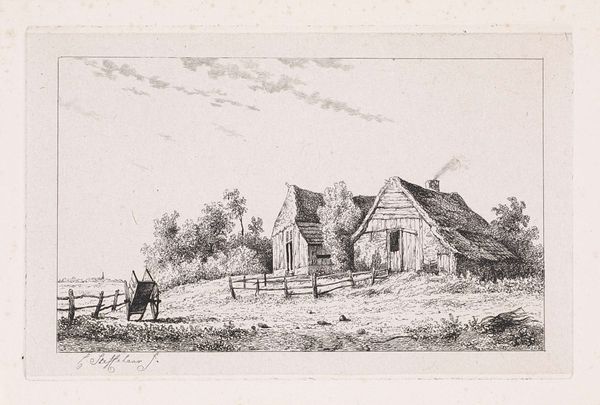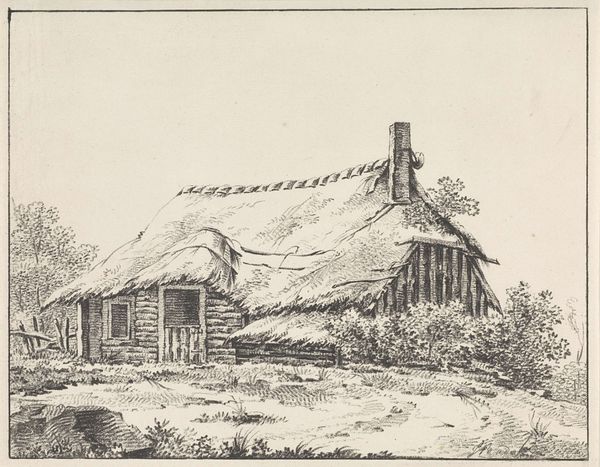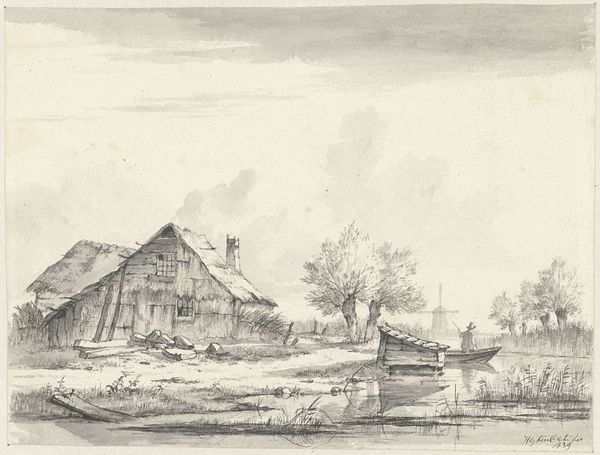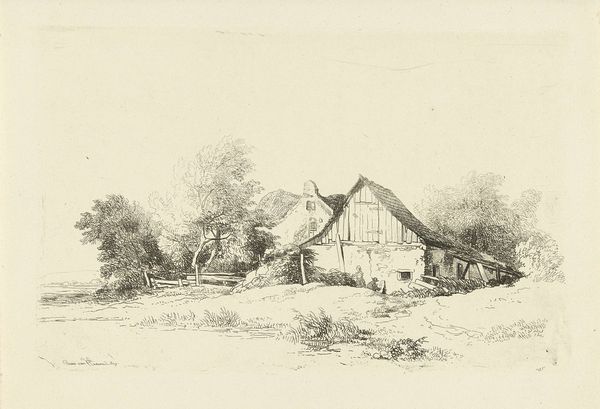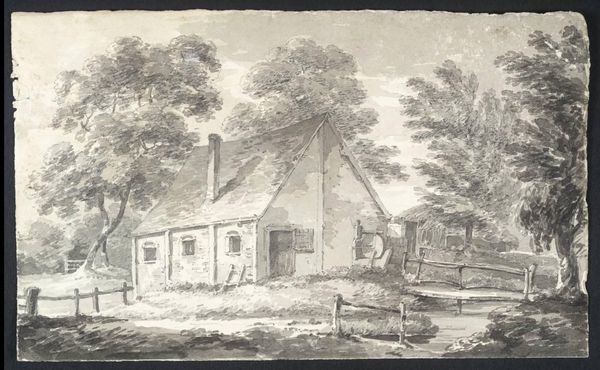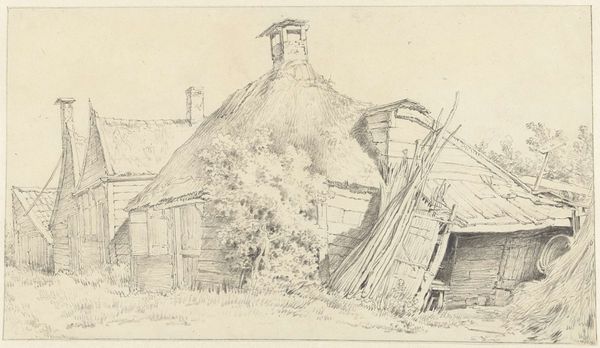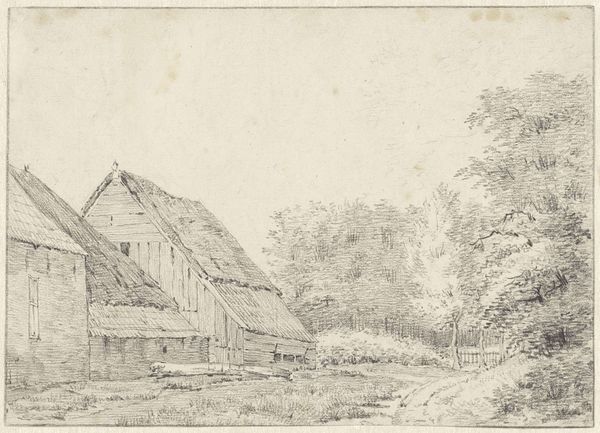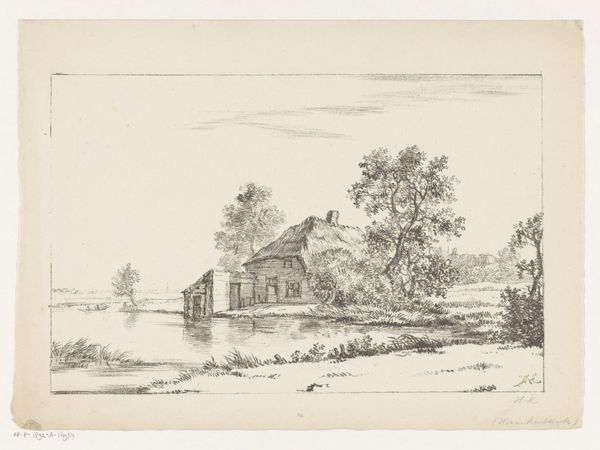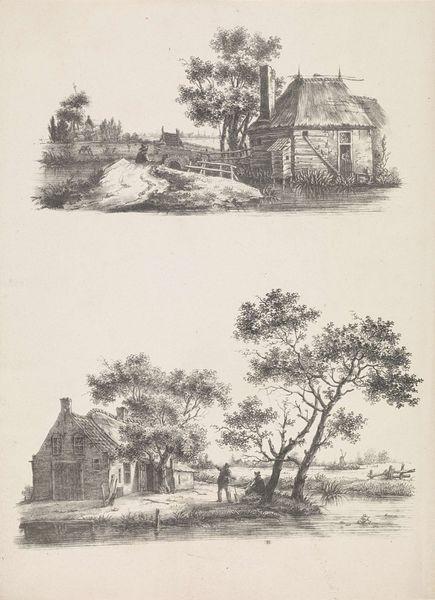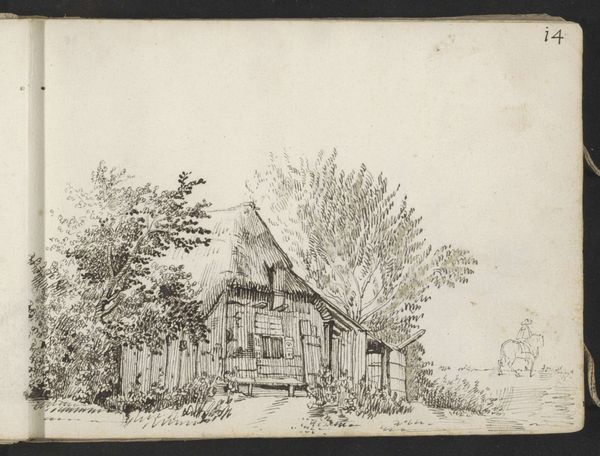
drawing, print, etching, pencil
#
drawing
#
dutch-golden-age
# print
#
etching
#
pencil sketch
#
old engraving style
#
landscape
#
etching
#
pencil
#
realism
Dimensions: height 118 mm, width 184 mm
Copyright: Rijks Museum: Open Domain
Editor: Upon initial viewing, what strikes me is the palpable stillness – an almost melancholic air hangs about this scene. Curator: I find myself drawn to Cornelis Steffelaar's etching, "Houten boerderijen," created sometime between 1807 and 1861. The work provides a window into the visual structure of rural life, specifically the construction and placement of wooden farmhouses in a landscape setting. Editor: It’s a masterclass in understated observation. Consider the way Steffelaar meticulously renders the textures of the wooden planks. He is pointing directly to how those structures are produced and their reliance on readily available material. The cross-hatching, the subtle gradations of tone – they all speak to the labor and material that constitutes these structures. Curator: Indeed, the etching technique lends itself perfectly to conveying the materiality of the wood. But, I'm most interested in how Steffelaar establishes a visual rhythm. Note the positioning of the farmhouses, the deliberate spacing, and how your eyes navigate through that composition, encountering variations of form and line. Editor: But it’s not just the spacing; it's how the material defines those forms. Look at the subtle wear and tear, evidence of use and of laboring on that land; the roof sagging ever so slightly on one farmhouse, compared to the other which is rigid and new. These are active participants in an ecosystem that consumes, exhausts and discards resources for new ones. Curator: That perspective sheds a very new light on that aspect. Still, consider the overarching composition. There is an elegance in the arrangement. Steffelaar carefully guides the viewer's gaze, constructing a cohesive and aesthetically pleasing arrangement from very utilitarian elements. Editor: Cohesive, perhaps, but that cohesion belies a more complicated narrative. We are consuming artwork to admire how things are placed, when things should be placed by how they are made and under what circumstances. It makes us complicit. Curator: While our interpretations differ, the success of "Houten boerderijen" lies, without question, in its enduring capacity to elicit such responses and dialogues about labor, intention, and aesthetics, of course. Editor: An image like this forces a closer look, if nothing else, at our role in perpetuating the patterns on which such quiet landscapes are constructed.
Comments
No comments
Be the first to comment and join the conversation on the ultimate creative platform.
